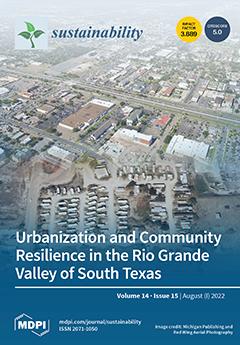At the current worrisome rate of global consumption, the linear economy model of producing goods, using them, and then disposing of them with no thought of the environmental, social, or economic consequences, is unsustainable and points to a deeply flawed manufacturing framework. Circular
[...] Read more.
At the current worrisome rate of global consumption, the linear economy model of producing goods, using them, and then disposing of them with no thought of the environmental, social, or economic consequences, is unsustainable and points to a deeply flawed manufacturing framework. Circular economy (CE) is presented as an alternative framework to address the management of emissions, scarcity of resources, and economic sustainability such that the resources are kept ‘in the loop’. In the context of manufacturing supply chains (SCs), the 6R’s of rethink, refuse, reduce, reuse, repair, and recycle have been proposed in line with the achievement of targeted net-zero emissions. In order to bring that about, the required changes in the framework for assessing the state of manufacturing SCs with regard to sustainability are indispensable. Verifiable and empirical model-based approaches such as modeling and simulation (M&S) techniques find pronounced use in realizing the ideal of CE. The simulation models find extensive use across various aspects of SCs, including analysis of the impacts, and support for optimal re-design and operation. Using the PRISMA framework to sift through published research, as gathered from SCOPUS, this review is based on 202 research papers spanning from 2015 to the present. This review provides an overview of the simulation tools being put to use in the context of sustainability in the manufacturing SCs, such that various aspects and contours of the collected research articles spanning from 2015 to the present, are highlighted. This article focuses on the three major simulation techniques in the literature, namely, Discrete Event Simulation (DES), Agent-Based Simulation (ABS), and System Dynamics (SD). With regards to their application in manufacturing SCs, each modeling technique has its pros and its cons which are evinced in case of data requirement, model magnification, model resolution, and environment interaction, among others. These limitations are remedied through use of hybrids wherein two or more than two modeling techniques are applied for the desired results. The article also indicates various open-source software solutions that are being employed in research and the industry. This article, in essence, has three objectives. First to present to the prospective researchers, the current state of research, the concerns that have been presented in the field of sustainability modeling, and how they have been resolved. Secondly, it serves as a comprehensive bibliography of peer-reviewed research published from 2015–2022 and, finally, indicating the limitations of the techniques with regards to sustainability assessment. The article also indicates the necessity of a new M&S framework and its prerequisites.
Full article





